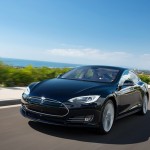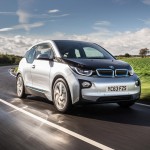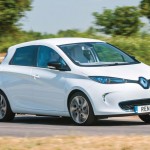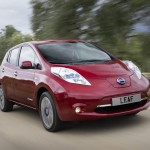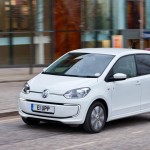First impressions
There is a well-known phrase within the electric vehicle industry: The EV Grin. It refers to the involuntary smile that everyone has when they take their first ride in an electric vehicle. It is a very strange sensation, getting into an electric car for the first time and driving away. The silence, the smoothness and the lack of vibration take some getting used to. Everyone’s first reaction is ‘Wow!’
Most electric cars do not have a gearbox, so the gear lever usually resembles an automatic, allowing you to select forward, reverse and park. In some cases, the gear lever has been replaced by a simple switch for selecting forward or reverse.
Once you switch on the ignition, there is no noise or vibration to let you know the engine is running. Most people are unsure whether the car is actually ready to pull away. As you tentatively put the car into Drive and touch the accelerator, there is a mild sense of shock that the car pulls almost silently away.
It takes a few minutes to get used to the strange sensation of travelling without engine noise. At speeds below 10 mph (16 km/h), the car makes very little noise, and as a driver you are aware of that. In fact, you will probably be more aware of that than anyone around you, as most modern cars are very quiet at walking speeds, anyway.
As the speeds increase, road noise and wind noise now mean that your electric car is making virtually the same amount of noise to the outside world as any other car. Inside the car, the impression is still that the car is exceptionally quiet, because you cannot hear an engine and modern cars have high-quality insulation to keep road and wind noise out of the cabin as much as possible.
Performance
Once you are used to the silence, you start noticing other things. The power delivery is very smooth and there is no vibration from the engine.
As you drive the car, you will start noticing how good the low-speed performance is. Electric cars are usually very quick when pulling away, and driving around town can be an enjoyable experience. The vast majority of electric cars provide excellent around-town performance.
At higher speeds on open roads, some of the smaller electric cars may feel under-powered. This is not the case with all models, but often high-speed performance is adequate rather than rapid.
The fun factor
Most people who have never driven an electric car are quite surprised by how much fun they can be.
A lot of the latest generation of electric cars are remarkably quick. The Nissan LEAF has as much torque as a conventional car with a 2½ litre V6 engine, while the Mitsubishi i-MiEV and Peugeot iOn have 0–62 mph (0–100 km/h) acceleration figures that are at least one second faster than the equivalent internal combustion engine cars. The BMW i3 is even more rapid, with sub 8-second 0–62 mph acceleration, whilst the Tesla electric performance cars are amongst the fastest cars on the road today.
This performance is always instantly available. Unlike a car with a gearbox (even an automatic), the car is always capable of providing instant acceleration whenever it is needed. There is no delay after putting your foot on the accelerator as the fuel is pumped into the engine. There is no changing gear to make sure you have enough power. With an electric car, the power is available instantly.
As the heavy batteries are mounted low down in the chassis, most electric cars have a low centre of gravity, often making for reasonable handling. Cars like the BMW i3, the Renault Zoe and Mitsubishi i-MiEV are great fun to drive. The instant acceleration, responsive steering and sharp handling make for an entertaining and enjoyable driving experience.
[box type=”info”] Extracted from The Electric Car Guide 2015 by bestselling author and industry expert Michael Boxwell.[/box]
